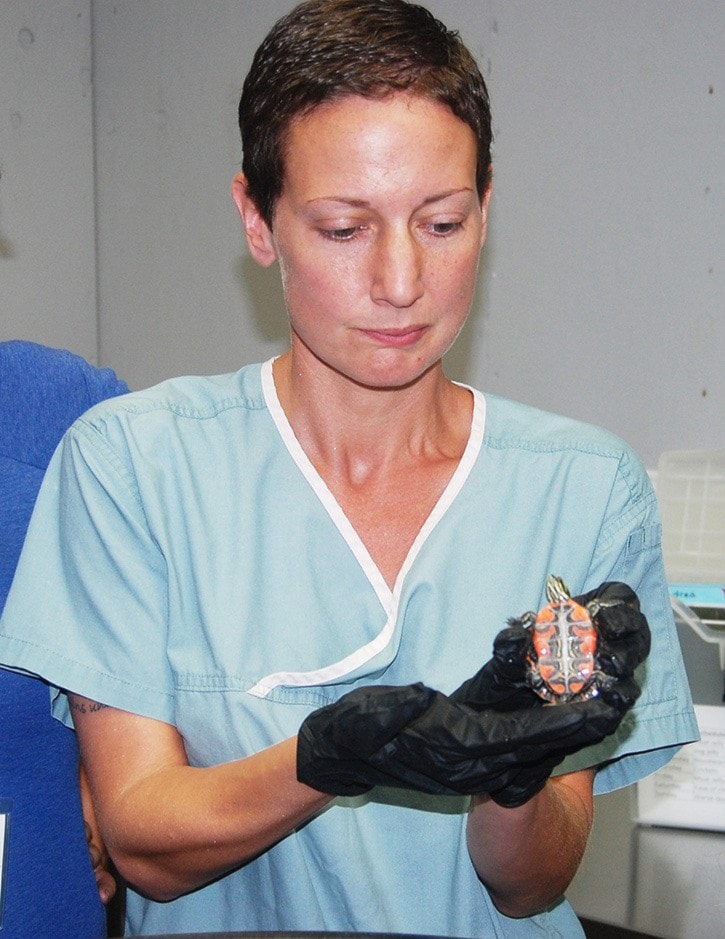Greater Vancouver Zoo is involved in another important conservation program, to benefit the Western Painted Turtles.
The Western Painted Turtles are the only remaining native pond turtle left in B.C. and is a species of conservation concern.
As far back as 2009 when the project was first under review zoo management and staff showed that they had a strong interest in being involved with the conservation efforts of the Western Painted Turtle. However, it wasn’t until spring 2012 when the zoo participated in taking eggs from the emergency locations and bringing them back to be incubated at the zoo. The emergency locations at Katherine Lake and Sakinaw Lake are in high traffic areas and if the zoo would not have stepped in to help the turtles with the head starting program, they would not have survived.
On Tuesday August 13, an energetic group from the Western Painted Turtle Recovery team, which included caregivers from the zoo and several biologists from the Ministry of Environment, released 12 turtles back into the same location where they originally collected the eggs.
Here is a link of a video which shows the first turtle being released back into their natural environment: http://bit.ly/16eUxbn
According to the Committee on the Status of Endangered Wildlife in Canada (COSEWIC), the Pacific Coast Population of the Western Painted Turtle is listed as endangered, while the Intermountain - Rocky Mountain Population is listed as special concern. A short supply of suitable habitats due to urban development, drainage of wetlands, forestry, road building, and other human activities are a limiting factor for this species and other freshwater turtles.
The Western Painted Turtle is named after the bright yellow stripes on its head, neck, tail and legs, and the glowing red on its plastron (shell covering the belly) and under-edge of its carapace (shell covering the back). They can grow to over a foot in length, and can often been seen basking in areas completely surrounded by water to avoid predators.
If you see a Painted Turtle, the best thing to do is to keep your distance. Be careful not to trample on turtle nest sites, and never take wild turtles home as pets.
Wildlife Preservation Canada (www.wildlifepreservation.ca) is also a very strong supporter of the Western Painted Turtle Recovery Program.
